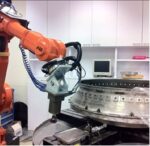Have you optimised your asset care strategy?
-Ian Walsh, Partner, Argon & Co NZ It’s great to see the recent government announcements allowing additional tax deduction for new assets, which will encourage business to invest in plants and equipment to help drive productivity. These are all a step in the right direction for making New Zealand’s manufacturing sector more competitive on a global stage. With that said, any investment should be reviewed in terms of the cost and benefit, and the overall business case for making it. When I worked in Japan the approach taken was to drive efficiency and productivity until you had exhausted the potential of your existing assets. The aim was to get the absolute maximum possible out of all the equipment and space available, and only then to invest in extra capacity. This led to a relentless focus on efficiency and debottlenecking to get the most reliable, most productive assets. I remember a conversation I had with a production manager at one of these Japanese plants. He explained to me how he disliked new equipment, as “the first day was the worst day”, and it got better after that. He preferred older equipment because “we know everything about it and how to run it highly efficiently”. This is interesting to compare with more ‘Western’ approaches where we assume that new equipment is at its best on its first day and then we depreciate it, because it’s deteriorating and will only perform worse from then! The difference is that the better performing factories don’t only invest in new capital when they need capacity (or to meet an innovation need); they invest in the total asset. This includes how it is commissioned, optimising it for its role, how it is run, how it’s maintained, care for its individual parts, how people are trained to operate […]









